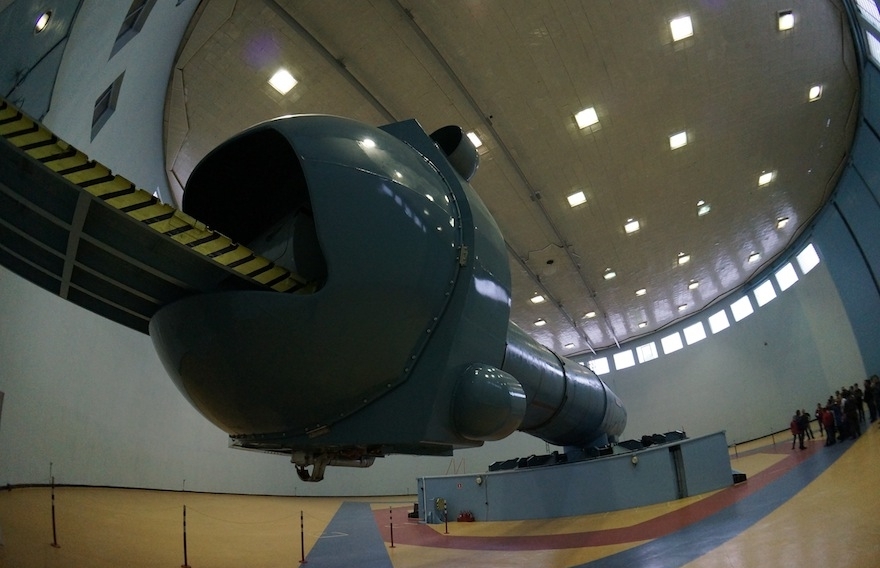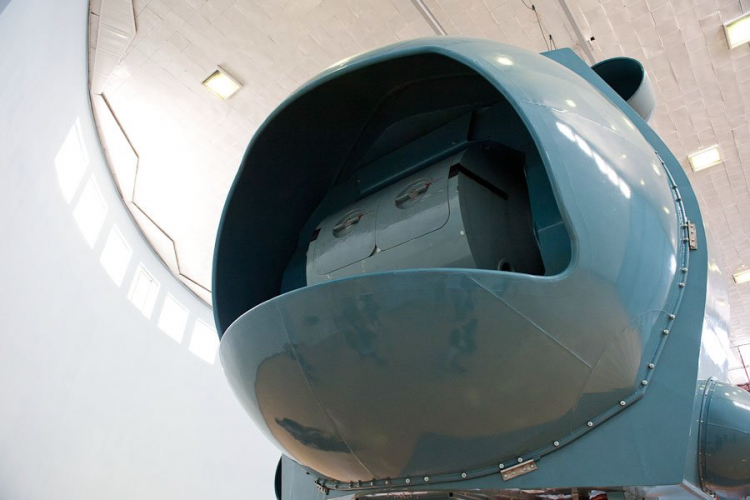Russian Centrifuge
The world's largest centrifuge is located in Russian Cosmonaut training base. Visit Russian Cosmonaut training Center to feel the history of Russian space exploration and its today's life.
To increase cosmonauts’ resistance to g-loads, a centrifuge and built-in trainers are used. Cosmonauts’ g-load adaptation performance is based on blood re-circulation in a human body. During systematic g-load applies to human body, its central nervous system forms new conditional-reflex connections which stay active so that resistance to G-loads increases.
In 1980, ЦФ-18 Centrifuge was put in place. The Centrifuge is used to select “rookies”, train cosmonauts’ performance while under g-loads, test flight equipment, fulfill scientific reserches. During preparation for space flights, cosmonauts and USOS/NASA astronauts take Centrifuge runs or spins with 5g along "head-pelvis" direction and 8g along "chest-back" direction.


Technical information:
To be able to monitor a crewmember’s health status during centrifuge runs, a medical-physiological complex is available.
Interested in feeling g-load like astronauts feel it during Russian spacecraft nominal descent with 4g and ballistic landing with 8g? You can do that. Send us a message. For Education Program terms and prices - also please send us a message at This email address is being protected from spambots. You need JavaScript enabled to view it.